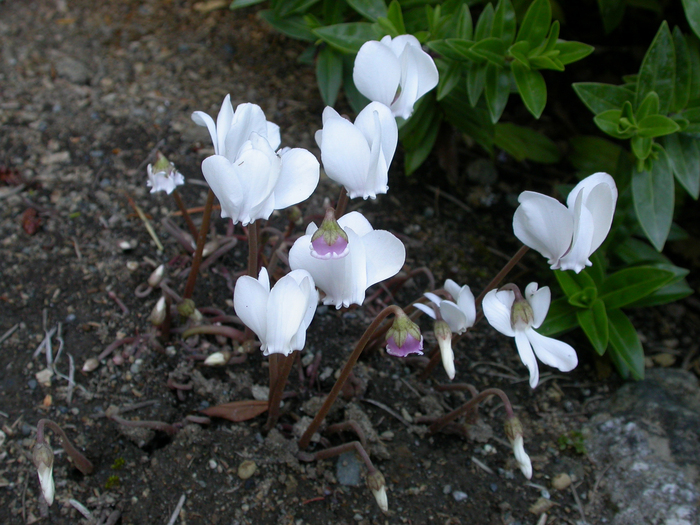
This plant appears to be growing without the aid of any leaves.
This is not impossible – several plants in the Pacific
Northwest are parasitic to certain species of fungi, who in turn
have a symbiotic relationship with trees. So the flowers live a
tertiary life, sapping energy from the photosynthesis of trees and
filtering it through the fungi to route around the trees'
defences. Plants such as the Indian Pipe, the Pinedrop, and the
Phantom Orchid all perform this skirting of the photosynthetic
pathways.
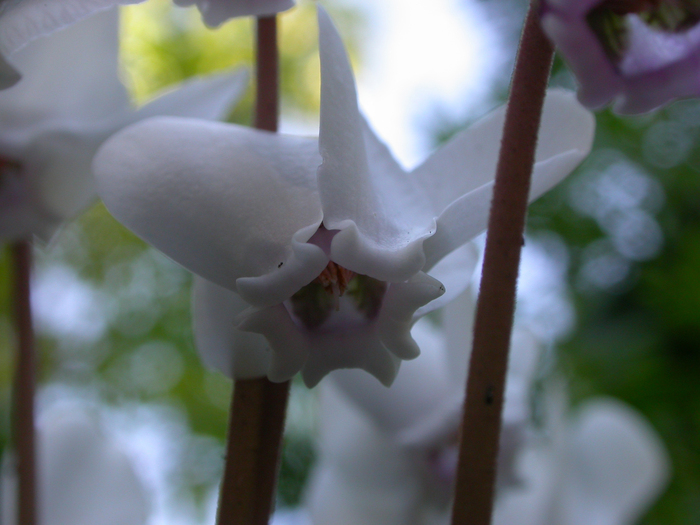
Closer inspection, though, reveals this to be a cyclamen. I
have no idea where its leaves are, or how its managing to grow
without them.
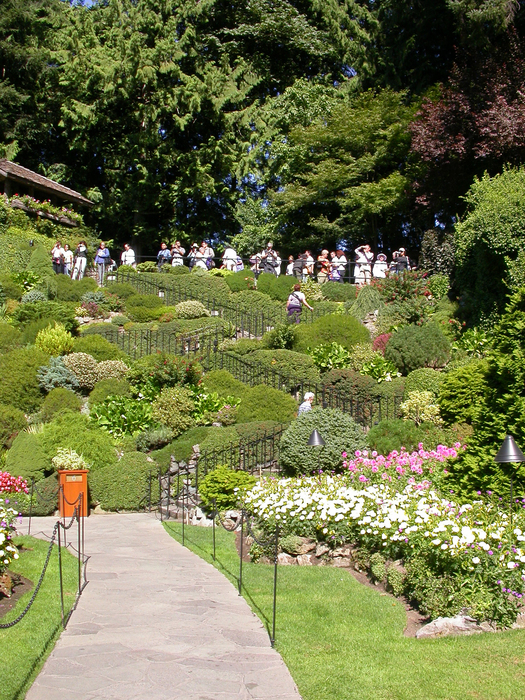
Back up to the display garden...
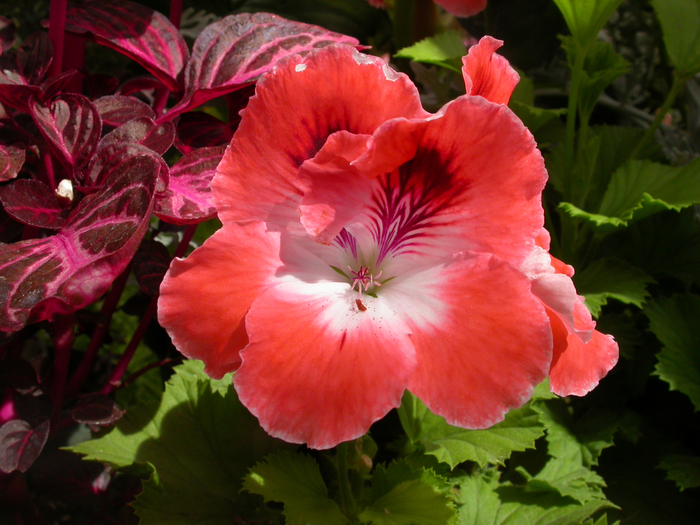
This intricate flower is actually a type of geranium, a Martha
Washington.
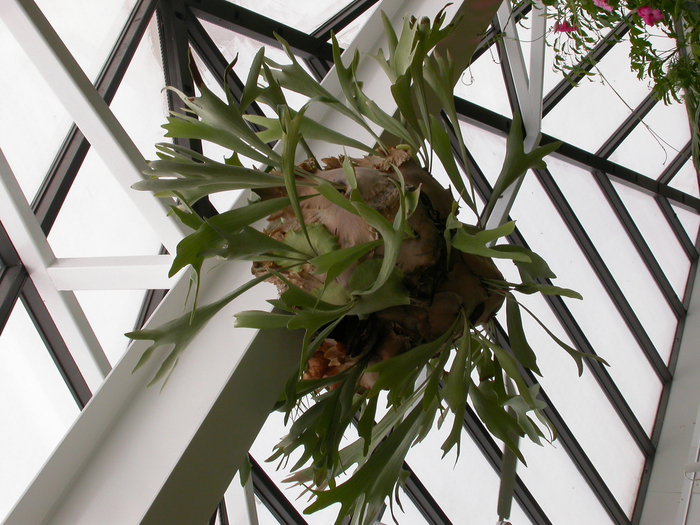
Careful inspection reveals this bromelid hanging around on the
celing.
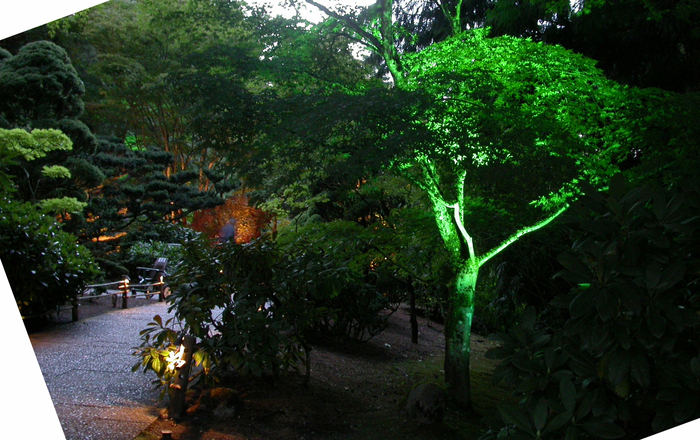
Evening was starting to fall, so we started on our way out...
but the gardens were lighting up.
In order to get this picture without blurring, I had to steady
the camera at an odd angle. I really like the green light on the
tree in front, and how it contrasts with the orange light on the
trees behind.
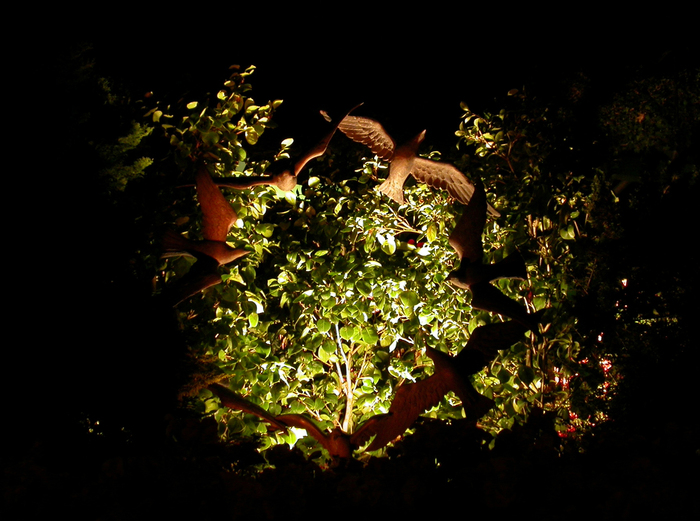
The lighting on this sculpture is pretty amazing, too.
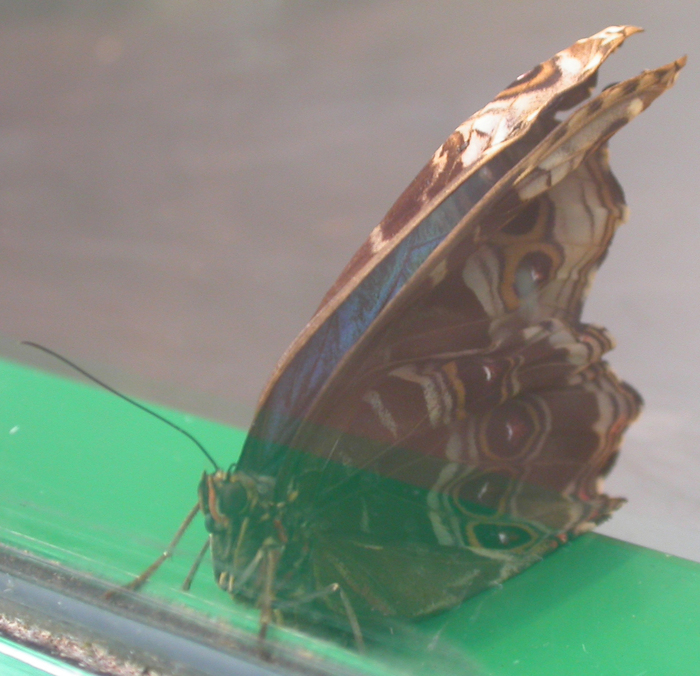
We decided to spend the morning before our ferry ride back at
the butterfly garden. This blue morpho butterfly had just emerged
from its crystalis and is drying its wings. You can just barely
see the iridescent blue of its dorsal wings. Generally, they rest
with their wings closed, so the color of their name is hard to
catch.
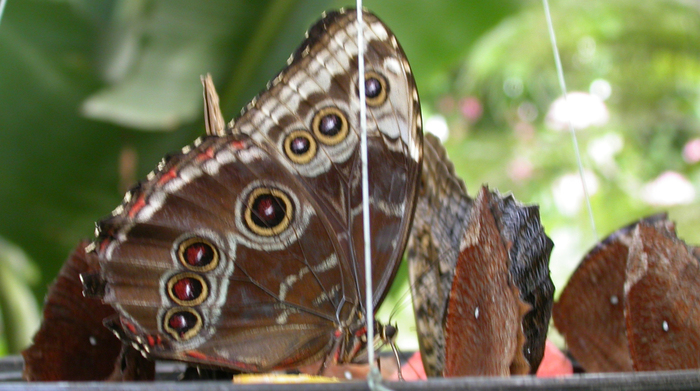
Generally, this is the view you get – their brown eye
spots. Still pretty neat, though.
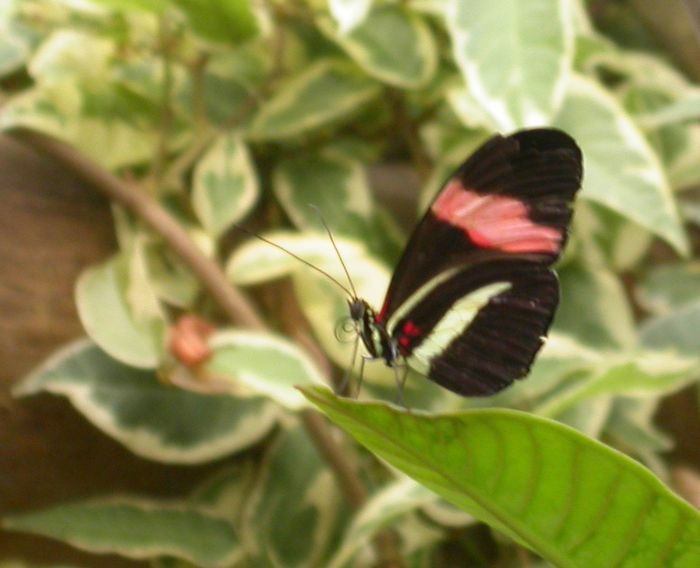
Getting photos of butterflies that aren't blurry is a little
tricky, as they don't hold still much. I like that you can see
the tongue on this one.
Back to previous photos
On to next photos
Back to index









